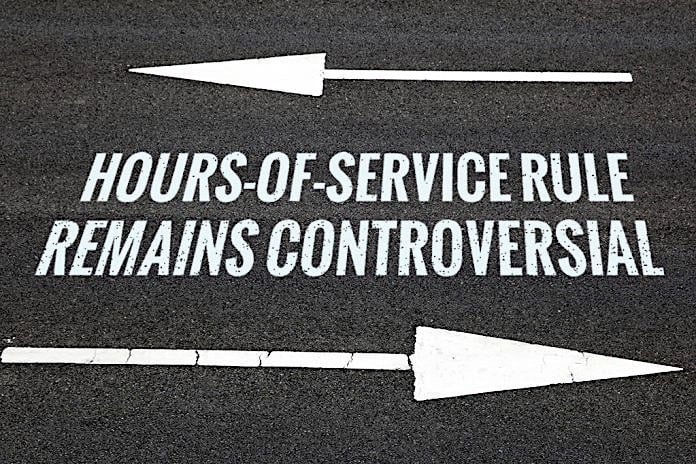Research on the “Restart” provision of FMCSA’s final rule on Hours of Service (HOS) indicate commercial drivers can experience fewer lapses in attention due to sleepiness behind the wheel. A main trucking advocate, however, said the report is lacking.
Field Study on the Efficacy of the New Restart Provision for Hours of Service, sponsored by FMCSA and conducted by the Washington State University Sleep and Performance Research Center, and Pulsar Informatics, Inc., tracked the electronic logs of 106 drivers throughout 1,260 days and nearly 415,000 miles from last January to July to measure sleep, reaction time, sleepiness and driving performance. The goal was to investigate the efficacy of the new restart provision for HOS implemented last July.
That provision governs interstate motor carriers with vehicles that weigh 10,001 pounds and more, and are designed to transport nine or more passengers for compensation or 16 or more passengers not for compensation, including some interstate, for-hire school charter or activity trips. But school bus drivers engaged in home-to-school transportation are exempt from HOS requirements.
The restart requires two periods of rest from 1 a.m. to 5 a.m. in the motor carrier’s “home terminal time zone” before drivers may restart their maximum 60- to 70-hour workweek. This rest requirement is part of a provision that allows drivers to restart the clock on their workweek by taking at least 34 consecutive hours off-duty. Restarts can also only be used once per a seven-day period.
Among the reseach findings, drivers who begin their workweek with only one, four-hour rest break also exhibited more lapses of attention, especially at night. Additionally, these drivers reported greater sleepiness, especially toward the end of their duty periods, and they showed increased lane deviation in the morning, afternoon and night.
The study also concluded that: sleep occurred predominantly throughout the day during duty cycles; time spent on duty occurred predominantly at night; and time spent driving was greater and occurred more typically at night.
FMCSA has stated that the HOS rule will prevent approximately 1,400 crashes and 560 injuries, and save 19 lives each year. The agency added that only the most extreme schedules in which drivers are working more than 70 hours in one week will be impacted, and the vast majority of workforce — more than 85 percent — will see little to no change in their schedules as a result. For passenger-carrying commercial drivers, the HOS stipulates a maximum of 10 hours operating the vehicle after eight consecutive hours off duty. These drivers may also not drive after having been on duty for 15 hours, following eight consecutive hours off duty. Off-duty time is not included in the 15-hour period. Additionally, driving is not allowed after 60 or 70 hours on duty in seven or eight consecutive days.
The American Trucking Association (ATA) said the information lacking from the new report might be as significant as the data that was included. It explained that the report failed to evaluate the safety effects or efficacy of the once-per-week restart restriction, commonly called the 168-hour rule, and it did not address the real-world safety implications of putting more trucks on the road during daytime hours, when more passenger vehicles are also on the road and the risk of crashes rises.
“We appreciate FMCSA releasing the results of its restart field study,” said Dave Osiecki, ATA’s executive vice president and chief of national advocacy. “However, in many respects, this short report is lacking critical analyses on several important issues.”
ATA successfully battled the HOS rule in a federal appeals court to exempt short-haul drivers — those operating within a 100 air miles from their home base — from being required to take a 30-minute break. The National School Transportation Association supported the exemption.
The passage and signing of MAP-21 on July 6, 2012, required the study be sent to Congress.
















